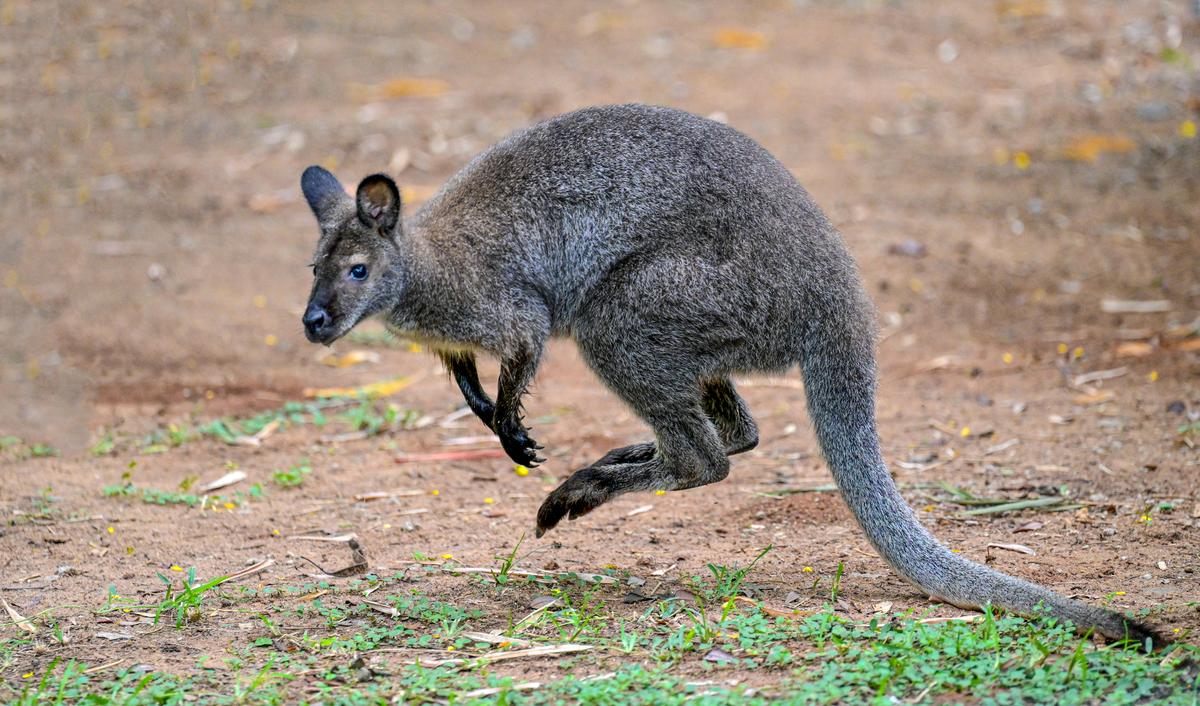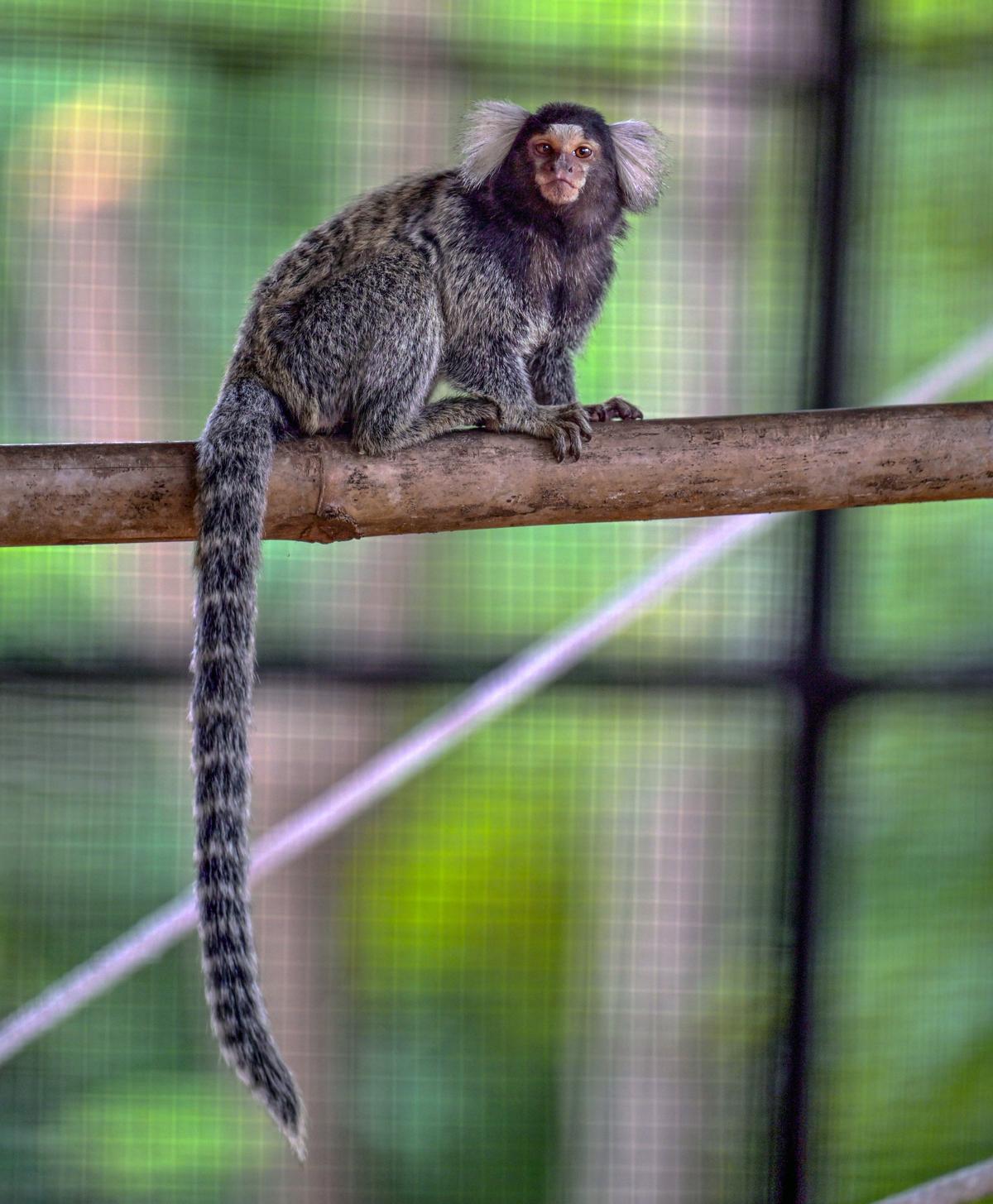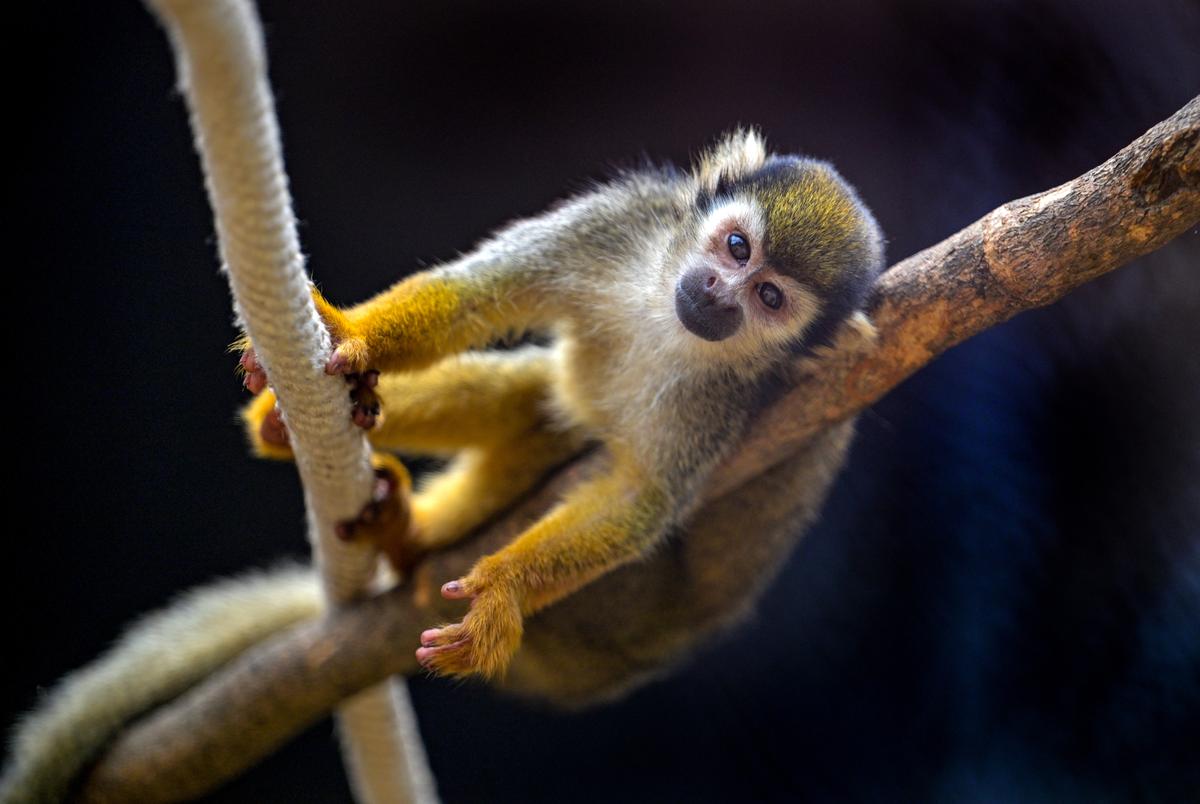The new crew in Visakhapatnam zoo: Marmosets, wallabies and meerkats move in
A meekat, in a playful mood at the Indira Gandhi Zoological Park in Visakhapatnam. The new species was recently brought to the zoo as part of an animal exchange programme with Greens Zoological rescue and Rehabilitation Centre, Jamnagar, Gujarat.
| Photo Credit: KR Deepak
Spread over 625 acres in the heart of Visakhapatnam, Indira Gandhi Zoological Park is located in the Seethakonda Reserve Forest and houses around 930 animals belonging to 94 species in a natural ambiance.
In a significant addition, the zoo recently welcomed a fascinating array of new inhabitants: red-necked wallabies, common marmosets, squirrel monkeys, and slender-tailed meerkats and bird such as green winged macaw, scarlet macaw, military macaw and medium sulphur crested cockatoo. These new additions are part of the zoo’s ongoing efforts to enhance biodiversity, provide educational opportunities, and promote wildlife conservation. As they settle into their new environments, both zoo staff and visitors are keenly observing their adaptation processes.
These animals were received in exchange for striped hyena, hog deer, painted stork, grey pelican, star tortoise, gharial, jungle cat, dhole, wolf and Indian gaur with the Greens Zoological Rescue and Rehabilitation Centre, Jamnagar in Gujarat. The zoo curator Nandani Salaria, who has played a key role in bringing the new species, shares their significance. “Only a few zoos in India, which includes zoos in Musuru, Bhubaneswar, Hyderabad, Chennai and Kolkata, have the red-necked wallabies, marmosets, squirrel monkey and meerkats. The animals are doing well in their new homes and have been a major crowd-puller,” says Nandani.
The Indira Gandhi Zoological Park has implemented a comprehensive adaptation strategy, focusing on habitat stimulation, gradual acclimatisation, dietary management, enrichment programmes and veterinary care.
A red-necked wallaby , in a playful mood at the Indira Gandhi Zoological Park in Visakhapatnam.
| Photo Credit:
KR Deepak
The red-necked wallaby, native to Australia, is known for its robust build and distinctive reddish fur around the neck. The introduction of these marsupials at the zoo has been a significant attraction. The wallabies have been provided with a habitat that mimics their natural bushland environment, complete with ample space for hopping and foraging. “We have provided hiding sites for the animals to minimise stress; it’s one type of environmental enrichment. A few hanging tree branches are placed in the enclosures for them to reach out and eat,” says the curator. Their diet includes hay, alfalfa and pelletes.
Known as the smallest of the monkeys native to South America, the marmosets, with their inquisitive nature and distinctive appearance, have quickly become a favourite among zoo visitors. The zoo has created a complex enclosure with plenty of vertical space, branches, and platforms to accommodate the marmosets’ arboreal lifestyle.
The marmosets have adapted well, exhibiting natural behaviors such as climbing, foraging, and social grooming. The zoo has paid special attention to their dietary needs, providing a variety of fruits, insects, and tree gum to mimic their natural diet. Their playful antics are drawing not just visitors, but also Nature photographers who are spending a long time to capture the movements.
A marmoset in a playful mood at the Indira Gandhi Zoological Park in Visakhapatnam.
| Photo Credit:
DEEPAK KR
Curiously peeping out of their enclosures, the meerkats have taken well to their new home, establishing a clear social hierarchy and displaying typical behaviours such as foraging and sentinel duty. Their adaptation is being closely monitored, with keepers ensuring they have access to a diet rich in insects and small vertebrates. Native to the deserts of Southern Africa, meerkats are highly social animals known for their cooperative behaviour and vigilance. The zoo has recreated a semi-arid environment for them, complete with wooden logs, hiding sites and lookout points. “We have also planted some bamboo species inside the enclosure along with replicating its natural environment to minimise the stress of the animal in captivity,” the curator adds.
A squirrel monkey, in a playful mood at the Indira Gandhi Zoological Park in Visakhapatnam.
| Photo Credit:
KR Deepak
The meerkats’ neighbours are the squirrel monkeys, often seen leaping between branches and engaging in social interactions. The zoo has introduced a variety of enrichment activities to stimulate their minds and bodies, ensuring they remain active and healthy.
As these animals continue to adapt to their new homes, they serve as ambassadors for wildlife conservation, highlighting the importance of preserving and understanding diverse species from around the world.
Indira Gandhi Zoological Park is open from Tuesday to Sunday, from 9am to 5pm.
Images are for reference only.Images and contents gathered automatic from google or 3rd party sources.All rights on the images and contents are with their legal original owners.





Comments are closed, but trackbacks and pingbacks are open.